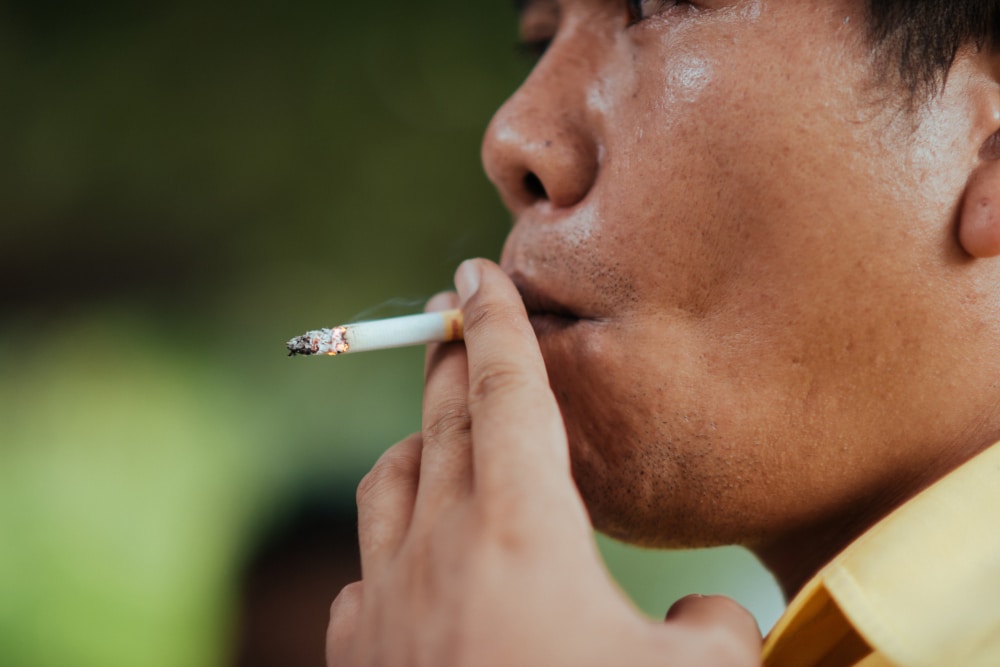Latest
WHO report: Tobacco use identified as major driver of child stunting globally
A new WHO report reveals the alarming impact of tobacco use, especially maternal smoking, on child stunting and development globally
Author
Author
- admin / 3 months

- 0
- 8 min read

Author
Every parent wants their child to grow healthy. From balanced nutrition to regular health check-ups, families take every step to ensure children reach their full potential. Yet, despite these efforts, a silent threat continues to undermine child growth—tobacco use.
In a recent report, the World Health Organisation (WHO) has highlighted the alarming impact of tobacco on child stunting, a condition affecting nearly 150 million children worldwide. Most cases are concentrated in Asia and Africa, and stunting is linked to delayed development, increased susceptibility to diseases, and even mortality. The report underscores that parental tobacco use, particularly maternal smoking during pregnancy, is a major factor impairing child growth.
What is stunting?
Stunting occurs when a child’s height-for-age falls more than two standard deviations below the WHO Child Growth Standards. It is caused by a combination of poor nutrition, repeated infections, inadequate psychosocial stimulation, and environmental toxins such as tobacco smoke.
According to the WHO, in 2024, over 15 crore children under 5 years were too short for their age, or stunted. This translates to roughly 23 per cent of all the children in this age group. Globally, African countries such as Burundi and Eritrea have reported some of the highest rates of stunting with about half the children aged 5 or less were found to be too short for their age.
In India, while stunting rates have improved according to the National Family and Health Survey (2019-21) compared to the previous round, it is still at 35.5 per cent.
Key findings: Fetal vs. postnatal growth
A major takeaway from the WHO report is the distinction between prenatal and postnatal effects of tobacco exposure. “For postnatal growth, it remains unclear whether the observed associations are causal or non-causal, whereas for fetal growth, there is stronger evidence supporting a causal relationship,” the report states.

“Maternal smoking during pregnancy is strongly linked to preterm birth, low birth weight and restricted fetal growth – all predictors of stunting by age two. Heavy smoking during pregnancy harms the baby, with stronger effects the more the mother smokes. The harm can persist well beyond infancy,” the report adds.
WHO noted that quitting smoking during pregnancy has a positive effect on child growth outcomes.
What are the dangers of tobacco smoke?
Tobacco smoke is more than just a risk factor for cancer—it contains thousands of harmful chemicals that affect both mother and child.
“Tobacco smoke has been found to contain more than 7000 chemicals, of which at least 69 are known to cause cancers in adults, while others can reduce the ability of the immune system to fight these cancers. Tobacco smoke is also known to cause cardiovascular and respiratory diseases,” the report highlights.
“There is an association between smoking during pregnancy and FGR, even when the pregnancy is full term. Maternal smoking can also lead to premature delivery. Children born prematurely can have a range of health problems. Both active tobacco smoking and exposure to second-hand smoke are harmful to pregnant women and their babies,” it adds.
The report warns that prenatal exposure can cause congenital anomalies, obesity, neurodevelopmental issues, and certain cancers. Maternal smoking raises healthcare costs and long-term risks, including lower productivity and chronic diseases.
It also mentions that emerging nicotine products, including e-cigarettes and heated tobacco, may harm fetal growth. “While no direct link has been found between stunting and the use of e-cigarettes and other novel products, a recent study in Japan reported an association between the use of heated tobacco products and FGR.” Maternal exposure can disrupt bone and lung development, increase placental issues, and contribute to fetal growth restriction.
Even second-hand smoke exposure is concerning. Even a few hours of daily exposure can increase stunting risk. Both maternal and paternal smoking contribute, with paternal exposure showing a dose-response effect. Mechanisms include maternal inflammation and reduced placental weight caused by toxins such as tumour necrosis factor alpha (TNF-α) and interleukins.
The report concludes: “There is substantial research indicating that both prenatal and postnatal tobacco smoke exposure— whether from the mother, the father or other household members—can negatively affect a child’s growth. While stunting is not solely caused by exposure to tobacco smoke, tobacco use is a significant contributing factor to poor growth outcomes.”
The literature indicates a dose-response relationship, with higher exposure leading to greater risks, and outlines several mechanisms by which tobacco smoke contributes to stunting. However, critical gaps remain, including understanding how exposure leads to fetal growth restriction and small-for-gestational-age infants, and the lack of systematic reviews on the impact of tobacco cessation on stunting, underscoring the urgent need for further research.
WHO’s call to action
To mitigate these risks, WHO urges countries to “implement the WHO Framework Convention on Tobacco Control (WHO FCTC) and its MPOWER measures – proven strategies to cut tobacco use and protect health.”
Key recommendations include: “protecting pregnant women and children from second-hand smoke; supporting tobacco cessation services, especially for expectant mothers; and enforcing smoke-free environments in all indoor public spaces.”
Dr Etienne Krug, Director of the Department of Health Determinants, Promotion and Prevention at WHO, said: “Stunting robs children of their right to grow, learn and thrive. Children with parents who smoke face a higher risk of stunting.”
The significance for India
Tobacco use is reducing in India, as per the latest available official data, but it is still significantly high. According to the Global Adult Tobacco Survey India, 2016-17, about 29 per cent of all adults in India still use tobacco in some form or the other, down from about 35 per cent in 2009-10.
Second-hand smoke is also a matter of grave concern in India, especially for pregnant women. “Nationally, 37.7 per cent of pregnant women were exposed to SHS at home during the one month preceding the survey; 21 per cent of pregnant women were exposed to SHS at their workplace; and 25.9 per cent were exposed to SHS at any of the seven in public places,” according to the Survey.
Dr Manju Gupta, Senior Consultant – Obstetrician & Gynaecologist at Motherhood Hospitals, Noida, with 20 years of experience, explained the impact of tobacco exposure on child growth in India. “Quite often, we see that women who have been smoking experience much more complicated pregnancies than others. One major reason is that the placenta doesn’t function well in women exposed to tobacco—either directly or through second-hand smoke. Since the placenta is a major source of nutrition for the child, impaired placental function can stunt fetal growth. We often see high blood pressure, fetal growth restriction, and even preterm labour or placental abruption in these cases,” she said.
“The supply to the uterus is affected, which can make conception difficult, potentially by impacting egg quality and uterine blood flow. Most children born under these conditions are on the lower centile of growth charts in utero, and initial postnatal growth may remain stunted for the first two years, though some catch-up may occur later,” she added.
A 2018 systematic review and meta-analysis examined the relationship between active tobacco use during pregnancy and growth outcomes in children under five years of age. “An analysis of 54 low- and middle-income countries found that in 21 countries, smokeless tobacco was the primary form of tobacco use among pregnant women. Interestingly, there is some geographic overlap of high prevalence of tobacco use by women and high prevalence of stunting in children. This is the case for countries in South Asia such as India and Bangladesh and for certain countries in sub-Saharan Africa,” it found.
Regarding postnatal growth, Dr Gupta noted that “because we don’t follow children closely after birth, it’s unclear whether associations with postnatal stunting are causal. Many growth-restricted babies catch up by age two, unless stunting began very early in pregnancy, in which case catch-up may be delayed or incomplete.”
She emphasised the lasting impact of tobacco exposure. “Even if a woman has stopped smoking for a year before pregnancy, prior tobacco use can still affect fertility and pregnancy outcomes. This applies to both partners, as parental health directly influences the child’s growth,” she said.
Dr Gupta stressed prevention. “A holistic approach is needed. Young couples often consider smoking and alcohol casual habits, but even short-term use can have long-term detrimental effects. Smoking at any point in life is not recommended, as its consequences on fertility and pregnancy outcomes persist,” she noted.
Also read: WHO recommends a twice-a-year injection for HIV prevention










